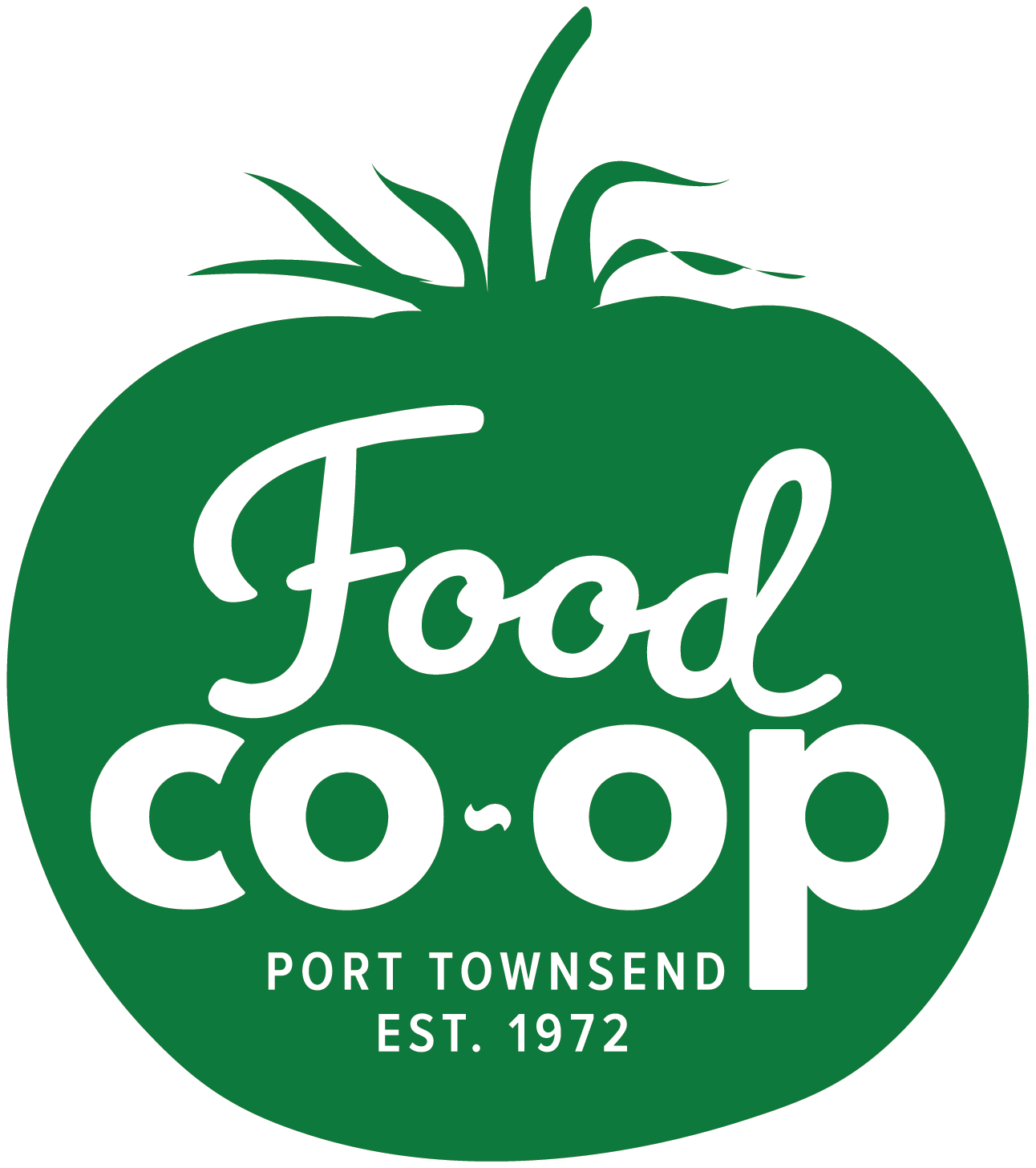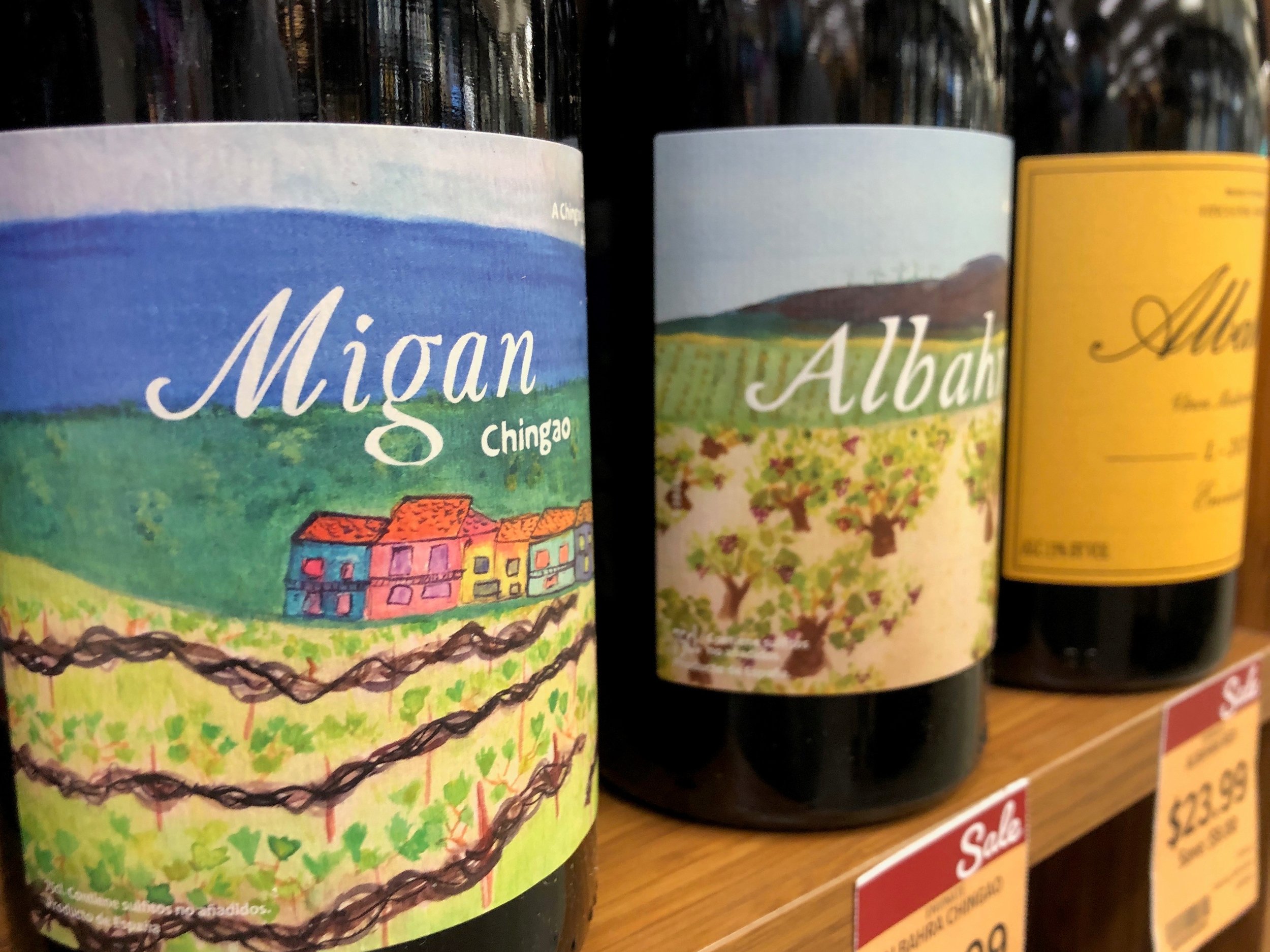Viva España! Spanish Natural Wines at the Food Co-op
By James Robinson, Your Co-op Sommelier
For natural wine lovers lovers, Spain offers some of the most exciting options on the market today. With a cadre of passionate winemakers focused on native varietals, spontaneous fermentations and coaxing nuance and soul from the country’s many microclimates, there are few regions on the planet where wine enthusiasts can enjoy so many terroir-driven wines, rich with verve, moxie, vivacity and authenticity. From high-elevation, terraced vineyards in the verdant Galician hills, to the volcanic slopes of Tenerife, Spanish viniculture has something for every wine drinker. And for those willing to embark on an Iberian adventure, the co-op shelves are rich with opportunity.
Envínate
Envínate (translates as "wine yourself") is the brainchild of four friends, winemakers Roberto Santana, Alfonso Torrente, Laura Ramos, and José Martínez. This gang of four formed in 2005 while studying enology at the University of Miguel Hernandez in Alicante. Upon graduation, they formed a winemaking consultancy, which evolved into Envínate, a project that focuses on exploring distinctive parcels mainly in the Atlantic-inflected regions of Ribeira Sacra and the Canary Islands. Their collective aim is to make profoundly pure and authentic wines that express the terruño of each parcel in a clear and concise manner. To this end, no chemicals are used in any of the Envínate vineyards, all parcels are picked by hand, the grapes are foot-trodden, and the wines are fermented exclusively with wild yeasts, with a varying proportion of whole grape clusters included. For aging, the wines are raised in old barrels and concrete – sulfur is only added at bottling, and only when absolutely necessary. The results are some of the most exciting and honest wines being produced in Spain today. The co-op’s shelves currently feature the following:
Benje Blanco $28.49
From the island of Tenerife, Benje Blanco is sourced from several old-vine, untrained, ungrafted parcels of listan blanco. Each parcel is hand-harvested and vinified separately in a mix of concrete tank and open tubs. Seventy-five percent of the fruit is pressed directly off the skins, the other 25 percent is skin- macerated for 14 to 40 days. The wine is then raised for eight months on fine lees in 60 percent concrete and 40 percent old French barriques – unfiltered.
Benje Tinto $28.49
Benje Tinto is sourced from high elevation (1,000 meters), old vine, ungrafted parcels of listan prieto (mission) with a bit of tintilla. Each parcel is hand-harvested and vinified separately, some in concrete and some in small open tubs. Maceration lasts from 10 to 30 days. The wine is aged for eight months in neutral French barriques, then bottled without fining or filtration.
Migan Chingao $46.99
Made from 100 percent listan negro grown on a single parcel of the Migan Vineyard on the island of Tenerife. Viticulture here is highly traditional – vines grow untrained, the soil is worked by hand and no chemicals are used. After harvest, the grapes undergo whole cluster fermentation in concrete tanks. After fermentation, the wine ages for eight months in the same concrete tanks and then bottled without fining, filtering or the additions of sulfites. All Chingao wines are sulfite free.
Albahra $23.99
Albahra (Castilian for “small sea”) is named for the vineyard area in the Almansa region close to the town of Albacete, located at the southeastern tip of Castilla-La Mancha. Albahra is a blend of 70 percent garnacha tintorera and 30 percent moravia agria. The garnacha tintorera (aka alicante bouschet, a red-juiced grape) is from a three-hectare parcel vineyard on clay and calcareous soils. The moravia agria (a high-acid, low alcohol blending grape) is from a single vineyard on sandy clay-calcareous soils in neighboring Manchuela, which is pruned to get larger grapes, since there is only around 50ha of Moravia Agria left in Spain.
All grapes are hand-harvested and vinified separately by parcel. The garnacha tintorera is foot-trodden in vat with 30-50 percent stems included and six to 10 days skin maceration, then fermented and raised on fine lees in concrete for eight months. The moravia agria is completely destemmed and sees seven days maceration before being pressed and raised on fine lees in used French barriques for eight months, all without battonage. The wine is then blended and bottled unfined, unfiltered and with very little SO2 addition.
Albahra Chingao $30.99
Made from 100 percent garnacha tintorera growing on a single 26-hectare plot in Almansa, Spain. The vines grow in calcareous soils at 2,700 feet in elevation. The grapes were fermented separately, by parcel, with indigenous yeast in concrete tanks with 70 percent whole bunches trodden by foot. The juice macerated on the skins for eight to 10 days before pressing and then resting on fine lees for eight months – bottled without fining, filtration or the addition of sulfur.
Luis A. Rodriquez Vazquez
Luis Anxo Rodriguez Vazquez Os Pasás Blanco 2017 $40.99
Luis A. Rodriguez established his bodega in 1988 with the goal of making terroir driven wines from indigenous grape varieties, such as treixadura, brancellao and caiño that were, at the time, on the verge of extinction. Since 1988, Rodriquez has slowly accumulated almost six hectares comprised of nearly 180 micro-parcels, most replanted by Rodriguez using either ‘seleccion massale’ or grafting onto old Palomino rootstock. Rodriguez makes wine in the same cellar as his grandfather, where he utilizes native yeasts, limits use of sulfur, and practices élevage in steel tank, foudre and mostly used, large French oak barrels.
Rodriquez focuses his efforts on the Ribeiro D.O., an ancient Galician wine region located 45 miles inland from the Atlantic Ocean, just north of Portugal. Ribeiro had historically produced Spain’s most prestigious white wines, but in the early 20th century oidium, phylloxera, and war devastated the region and Ribeiro’s wines lost favor. Native vines were torn up, and palomino was widely planted due to its higher yields. Cooperatives took over most of the production. By utilizing a mix of old-fashioned and modern winegrowing methods, Rodriguez and a few others are responsible for the revitalization of artisanal Ribeiro winegrowing and his vinhos tintos are considered to be the standard bearers for Ribeiro.
Rodriguez’s main white wine, ‘Os Pasas,’ is comprised of roughly 70-75 percent treixadura, a variety known for producing delicate, peachy, and flinty wines ideal for blending with the higher acid varieties like albariño, lado, and the floral torrontés. The grapes were hand-harvested, de-stemmed and fermented with native yeasts in steel vat, and raised in vat for 10 to 12 months (with three months on fine lees) before bottling with a light clarification (bentonite) and filtration. Os Pasas is a fresh, light- to medium-bodied vinho branco with beautiful structure and subtle flavors of citrus, honey, and seashell minerality.
Laura Lorenzo
Laura Lorenzo was the winemaker and viticulturist at an established Ribeira Sacra estate for close to a decade before striking out on her own in 2014 with her Daterra Viticultores project. Lorenzo now works about 4.5 hectares organically in the Val do Bibei-Quiroga subzone of Ribeira Sacra. Through her meticulous work in the vineyard, Lorenzo’s goal is to cultivate life in her soils that were once damaged by industrial viticulture, and to bring harmony to her vineyards and grapes. In the winery, Laura lets the grapes speak for themselves – fermenting with wild yeasts, utilizing older wooden casks for fermentation and elevage, and adding only small amounts of sulfur during the winemaking process, with no clarification or filtration.
Daterra Viticultores Casas Enribo Tinto $29.99
Casas de Enriba comes from Laura's own two south-facing parcels of young Mencía on granite with a mix of gravel, clay, gneiss, quartz. The grapes are hand-harvested, partially destemmed and fermented with wild yeasts in used 500L French oak barrels, with only four days of skin maceration. The wine is then raised in the same barrels for 10 months and bottled without fining or filtration. The resultant wine is floral and mneral with fine tannins and vibrant acidity.
Daterra Viticultores Camino de la Frontera Tinto $30.99
Camino de la Frontera Tinto comes from an ancient, northwest-facing vineyard in the Parque Natural de Los Arribes del Duero. The site is planted to mostly Juan Garcia, tinta madrid (aka Tempranillo), and rufete balanced by other indigenous varieties. After a cool, wet and humid summer, the grapes were hand-harvested, then 50 percent were foot-trodden whole-cluster and 50 percent were destemmed. The grapes were wild yeast fermented in a used 4,000 liter French oak cask and a 1,000 liter chestnut foudre with 11 days of skin maceration. The wine was then raised in the same vessels for 11 months. This is a red wine of elegant rusticity, with a floral nose and a touch of toasty oak from the new foudre, along with soft tannins and bright acidity.






